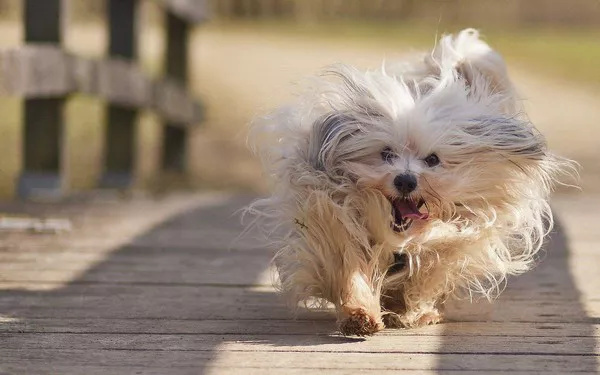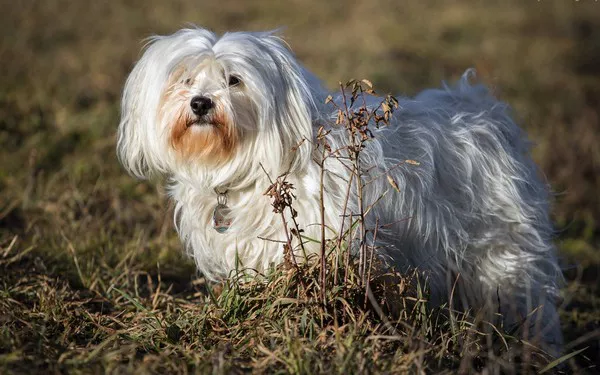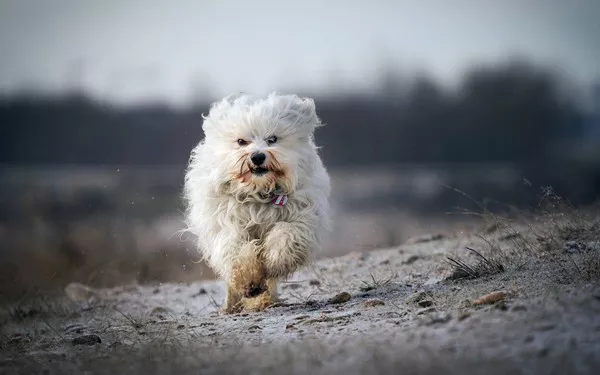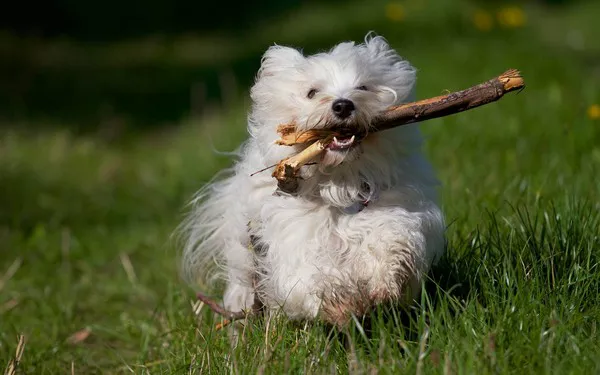Schnauzers are a distinctive breed of dog known for their expressive eyebrows, bushy mustaches, and distinctive beard. With their German heritage, these dogs come in three sizes—Miniature, Standard, and Giant—each with unique traits and personalities. A common concern for new Schnauzer owners is whether Schnauzer dogs are difficult to potty train. This article explores the breed’s characteristics and living habits, and provides an in-depth look at the potty training process for Schnauzers, addressing common challenges and offering effective strategies.
Introduction to Schnauzers
Schnauzers are a versatile breed, recognized for their unique appearance and varied sizes. Originating in Germany, Schnauzers have historically been used as working dogs for tasks such as rat catching and guarding. Their intelligence and energy levels make them a popular choice for families and individuals alike.
Physical Characteristics
Schnauzers are distinguished by their distinctive facial hair, including a prominent beard and eyebrows. They come in three sizes:
Miniature Schnauzer: Standing around 12 to 14 inches tall and weighing between 11 to 20 pounds, this size is the smallest of the three and is known for its lively and affectionate nature.
Standard Schnauzer: This medium-sized Schnauzer stands about 17 to 20 inches tall and weighs between 30 to 50 pounds. It is often noted for its balance between agility and strength.
Giant Schnauzer: The largest of the breed, standing between 23.5 to 27.5 inches tall and weighing 55 to 85 pounds, the Giant Schnauzer is known for its robust physique and powerful presence.
Temperament and Intelligence
Schnauzers are highly intelligent and eager to please, traits that generally make them amenable to training. They are also known for their alertness and vigilance, which historically made them excellent watchdogs. However, their intelligence can sometimes manifest as stubbornness, which can impact the potty training process.
Living Habits
Schnauzers are energetic and thrive on regular exercise and mental stimulation. They are social dogs that enjoy being part of the family and can adapt to various living environments, from apartments to houses with yards. Their adaptability is advantageous in training, but their high energy levels mean they require consistent routines and engagement.
The Basics of Potty Training
Potty training is a fundamental aspect of responsible pet ownership. Understanding the basics of potty training and how they apply to Schnauzers can help set the stage for success.
What is Potty Training?
Potty training involves teaching a dog to relieve itself in designated areas rather than inside the home. This process requires patience, consistency, and an understanding of the dog’s natural behavior and needs. Effective potty training not only makes life easier for owners but also contributes to a dog’s overall well-being by establishing a clear routine and expectations.
Key Concepts in Potty Training
Consistency: Establishing a regular routine for bathroom breaks helps dogs learn when and where it is appropriate to go. Consistency in commands and praise is also crucial.
Positive Reinforcement: Rewarding a dog for appropriate behavior encourages them to repeat it. This can include treats, praise, or playtime.
Understanding Signals: Learning to recognize when a dog needs to go outside is essential. This might include behaviors such as sniffing the ground, pacing, or whining.
Accident Management: Accidents will happen. Properly managing these situations without punishment is important for maintaining a positive training environment.
Are Schnauzers Hard to Potty Train?
Schnauzers are generally considered to be intelligent and trainable dogs, which can work in their favor during potty training. However, individual dogs may vary in their learning speed and reliability.
Factors Affecting Potty Training Difficulty
Age: Puppies require more frequent bathroom breaks and may have less control over their bladders compared to adult dogs. Training may take longer for very young puppies, but starting early can be beneficial.
Previous Training: A Schnauzer’s prior experiences with potty training can impact how quickly they adapt to a new routine. Dogs that have not been properly potty trained before may need more patience and consistency.
Individual Personality: While Schnauzers are generally smart, individual personality traits such as stubbornness or anxiety can affect the training process. Understanding each dog’s unique characteristics can help tailor the training approach.
Consistency and Routine: Schnauzers, like all dogs, thrive on routine. Consistent bathroom breaks and clear expectations are key to successful potty training.
Strategies for Potty Training Schnauzers
To effectively potty train a Schnauzer, employing a variety of strategies can be beneficial. Here are some proven methods:
Establish a Routine
Setting a consistent schedule for feeding, bathroom breaks, and exercise helps regulate a Schnauzer’s digestive and urinary systems. Puppies may need to go outside every 1-2 hours, while adult Schnauzers may require fewer breaks.
Use Crate Training
Crate training can be an effective method for potty training. Dogs naturally avoid soiling their sleeping area, so a properly sized crate can help encourage them to hold it until they are let outside. Ensure the crate is not too large, as this can lead to accidents in one part of the crate while the dog sleeps in another.
Designate a Bathroom Area
Taking Schnauzers to the same spot outside each time can help them associate the area with bathroom breaks. The scent of previous eliminations can signal to the dog that it is time to go.
Positive Reinforcement
Immediately reward Schnauzers with treats, praise, or playtime when they eliminate outside. Positive reinforcement helps reinforce the desired behavior and encourages the dog to continue using the designated bathroom area.
Supervision and Confinement
Supervising a Schnauzer closely indoors and confining them to a smaller area when not directly supervised can help prevent accidents. If you catch your Schnauzer in the act of eliminating indoors, immediately take them outside to the designated bathroom area.
Address Accidents Calmly
If accidents occur, clean the area thoroughly to remove any residual odor that might attract the dog to eliminate there again. Avoid punishment, as it can create fear and confusion. Instead, focus on reinforcing the positive behavior of going outside.
See Also: Are Schnauzers High Maintenance?
Common Challenges and Solutions
Even with the best training methods, challenges can arise during potty training. Understanding common issues and their solutions can help address these problems effectively.
Stubbornness and Resistance
Some Schnauzers may exhibit stubbornness during training. In such cases, it is important to remain patient and persistent. Consistency in commands, routines, and rewards is essential. Offering extra motivation, such as high-value treats or more frequent praise, can help overcome resistance.
Anxiety and Stress
Anxiety or stress can affect a Schnauzer’s ability to focus on training. Ensuring a calm and supportive environment during training sessions can help alleviate anxiety. Additionally, providing a safe and comfortable space for the Schnauzer to relax in can contribute to a more positive training experience.
Medical Issues
If a Schnauzer is consistently having accidents despite proper training, it is important to consider potential medical issues. Conditions such as urinary tract infections or gastrointestinal problems can affect a dog’s ability to control their eliminations. Consulting a veterinarian for a thorough examination can help rule out or address any underlying health issues.
Maintaining Potty Training Success
Once potty training is established, maintaining consistency and reinforcing good habits is key to ensuring long-term success. Here are some tips for maintaining a well-trained Schnauzer:
Regular Bathroom Breaks
Continue to provide regular bathroom breaks even after potty training is established. This helps reinforce the routine and prevents accidents.
Ongoing Positive Reinforcement
Continue to use positive reinforcement to encourage good behavior. Regular praise and occasional treats can help maintain the Schnauzer’s motivation and adherence to the routine.
Adaptation to Changes
Be prepared to adapt the training routine if there are changes in the Schnauzer’s environment or schedule. For example, if there is a change in feeding times or living arrangements, adjusting the bathroom break schedule may be necessary.
Continued Supervision
Maintain a level of supervision to ensure that the Schnauzer continues to adhere to the potty training routine. This is especially important during transitions or when introducing new routines.
Conclusion
Potty training Schnauzers can be a manageable task with the right approach and understanding of the breed’s characteristics. Schnauzers are intelligent and generally responsive to training, making them capable of learning proper bathroom habits with patience and consistency.
By establishing a clear routine, using positive reinforcement, and addressing common challenges, Schnauzer owners can successfully potty train their pets and create a harmonious living environment. Understanding the breed’s unique traits and needs ensures that the training process is effective and respectful of the dog’s natural behavior. With dedication and care, Schnauzers can become well-trained companions, contributing to a positive and enjoyable relationship between them and their owners.
Related Topics:





















